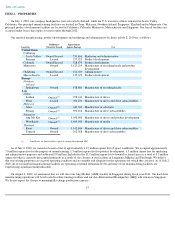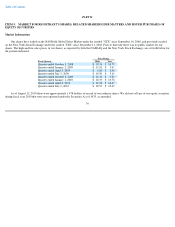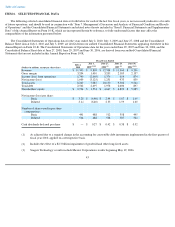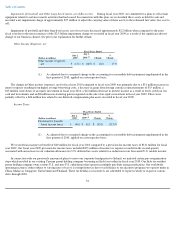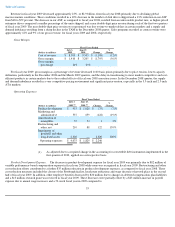Seagate 2009 Annual Report Download - page 47
Download and view the complete annual report
Please find page 47 of the 2009 Seagate annual report below. You can navigate through the pages in the report by either clicking on the pages listed below, or by using the keyword search tool below to find specific information within the annual report.
Table of Contents
• Critical Accounting Estimates. Accounting estimates that we believe are important to understanding the assumptions and
judgments incorporated in our reported financial results.
Our Company
We are the world's leading provider of hard disk drives based on revenue. We design, manufacture, market and sell hard disk drives. Hard
disk drives commonly referred to as disk drives, hard drives or HDDs, are devices that store digitally encoded data on rapidly rotating disks with
magnetic surfaces. The performance attributes of disk drives, including their cost effectiveness and high storage capacities have resulted in disk
drives being used as the primary medium for storing electronic data.
We produce a broad range of disk drive products addressing enterprise applications, where our products are designed for enterprise servers,
mainframes and workstations; client compute applications, where our products are designed for desktop and notebook computers; and client non-
compute applications, where our products are designed for a wide variety of end user devices such as digital video recorders (DVRs), personal
data backup systems, portable external storage systems and digital media systems. In addition to manufacturing and selling disk drives, we
provide data storage services for small- to medium-sized businesses, including online backup, data protection and recovery solutions.
Business Overview
Our industry is characterized by several trends and factors that have a material impact on our strategic planning, financial condition and
results of operations.
Demand Trends for Disk Drives
We believe the total available market (TAM) for disk drives, in aggregate, increased approximately 22% in fiscal year 2010, over the prior
fiscal year. We believe that continued growth in digital content requires increasingly higher storage capacity in order to store, aggregate, host,
distribute, manage, back up and use such content, which we believe will continue to result in increased demand for disk drive products.
However, the disk drive industry is sensitive to global macroeconomic conditions as experienced in fiscal year 2009.
Historically, the electronic data storage industry has introduced alternative technologies that directly compete with hard disk drives. Solid
state drives (SSDs), using NAND flash memory, are a potential alternative to disk drives in certain applications such as consumer handheld
devices and portable external storage. NAND flash memory is a type of non-volatile storage technology that does not require power to retain
data. However, we believe that in the foreseeable future the traditional enterprise and client compute markets that require high capacity storage
solutions as well as the data intensive client non-compute markets, will continue to be best served by hard disk drives based on the industry's
ability to deliver reliable, power consumption efficient and cost effective mass storage devices.
Disk Drives for Enterprise Storage. We define enterprise storage as disk drives designed for mission critical applications and nearline
applications.
Mission critical applications are defined as applications that are vital to the operation of enterprises, requiring high performance, and high
reliability disk drives. We expect the market for mission critical enterprise storage solutions to be driven by enterprises continuing to move
network traffic to dedicated storage area networks in an effort to reduce network complexity and increase energy savings. We believe that this
transition will lead to an increased demand for more energy efficient, smaller form factor disk drives. These solutions are comprised principally
of high performance enterprise class disk drives with sophisticated firmware and communications technologies.
Nearline applications are defined as applications that are less time-critical but capacity-intensive, such as reference data environments or
redundancy for recovery purposes, which require high capacity and low power consumption disk drives featuring lower costs per gigabyte. We
expect such applications, which
45




